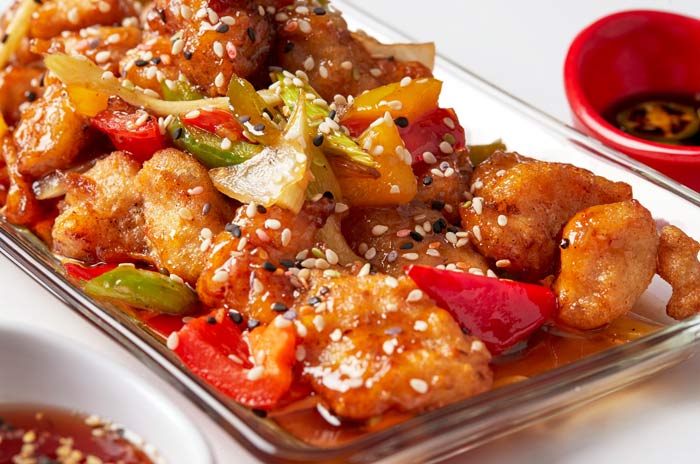When you think of Chinese food, what comes to mind? Is it a steaming bowl of Kung Pao Chicken, or perhaps a delicate xiaolongbao? Or maybe famous Peking duck? While these dishes are staples in Chinese restaurants around the world, the term “Chinese food” encompasses a vast and diverse array of culinary traditions that vary significantly across different regions of China. This diversity raises an interesting question: can we even generalize such a varied cuisine into one category?
Table of Contents
The Diversity of Chinese Cuisine
China’s culinary landscape is incredibly diverse, reflecting the country’s vast geography, history, and cultural differences. Generally, Chinese cuisine is categorized into eight major culinary traditions, each representing a different region: Shandong, Sichuan, Guangdong, Fujian, Jiangsu, Zhejiang, Hunan, and Anhui.
For instance, Sichuan cuisine is famous for its bold and spicy flavors, often incorporating Sichuan peppercorns that provide a unique numbing sensation. Dishes like hot and sour soup and Kung Pao Chicken exemplify the region’s love for spice and complex flavors. On the other hand, Cantonese cuisine from Guangdong province focuses on fresh ingredients and subtle seasoning, with dim sum being a popular representative of this culinary style.
In northern China, the cuisine is dominated by wheat-based foods like noodles and dumplings, reflecting the region’s agricultural practices. Meanwhile, southern China, with its warm and rainy climate, favors rice as a staple, leading to dishes that are often sweeter and more varied in ingredients.
Chinese Food in the West
The Chinese food that is popular in Western countries, particularly in Europe and the United States, often bears little resemblance to traditional Chinese cuisine. Many of the dishes that are now considered “Chinese” in the West were adapted by Chinese immigrants to suit local tastes and ingredient availability. This adaptation process has led to the creation of unique dishes that are not typically found in China, such as General Tso’s Chicken and fortune cookies.
One notable example is Chop Suey, a dish that was supposedly invented in the United States in the 19th century and became synonymous with Chinese food for many Americans. It consists of stir-fried meat and vegetables in a savory sauce and is rarely found in authentic Chinese cuisine.
Moreover, the popularity of certain dishes in the West, like sweet and sour pork, highlights the Western palate’s preference for sweeter flavors, which contrasts with the more balanced and often spicier flavors found in many traditional Chinese dishes.
Can We Generalize Chinese Cuisine?
Given the vast differences in regional cuisines within China, it is challenging to generalize Chinese food into a single category. Each region has its unique ingredients, cooking methods, and flavor profiles, influenced by factors such as climate, geography, and cultural history. For example, while Sichuan cuisine is known for its spiciness, Cantonese cuisine is celebrated for its freshness and simplicity.
Furthermore, the idea of food as medicine is deeply rooted in Chinese culinary tradition. This concept emphasizes the health benefits of ingredients and the balance of flavors to promote well-being, a principle that is less emphasized in Western adaptations of Chinese food.
Conclusion
In summary, Chinese cuisine is a rich and diverse tapestry of flavors and traditions that cannot be easily generalized. While the Chinese food found in Western countries has been adapted to suit local tastes, it represents only a fraction of the culinary diversity found within China. To truly appreciate Chinese cuisine, one must explore the varied regional dishes and understand the cultural and historical contexts that shape them.
So, next time you dine at a Chinese restaurant, whether it’s a local takeout or a high-end establishment, remember that you’re experiencing just a slice of a vast culinary world that spans thousands of years and countless flavors. Exploring this diversity is a journey worth taking for any food enthusiast.


